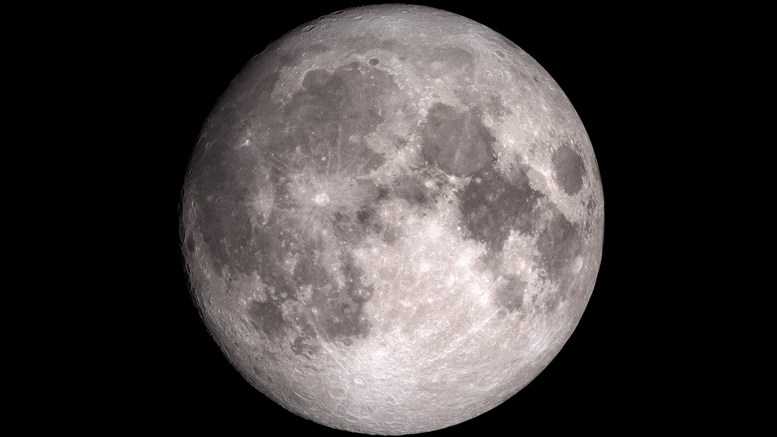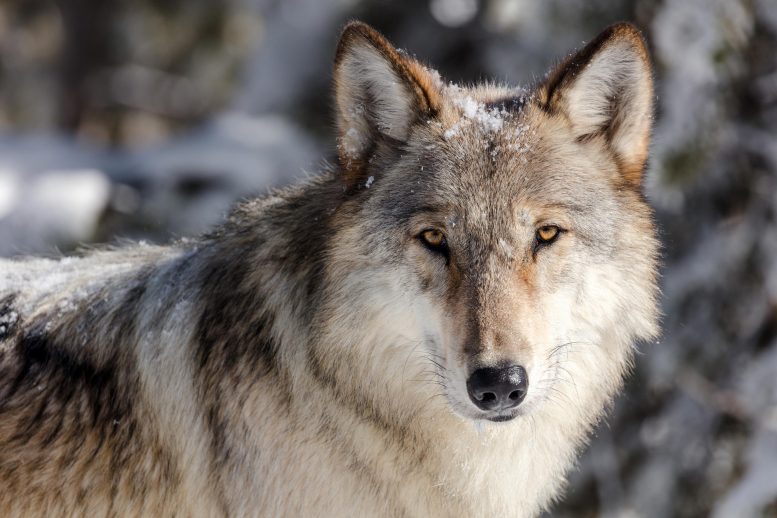
The Next Full Moon is the Wolf Moon, Ice Moon, Cold Moon, the Moon after Yule, the Long Night Moon, the Datta Jayanti Moon, Unduvap Poya, and the Chang’e Moon.
The next full Moon will be Tuesday evening, December 29, 2020, appearing opposite the Sun in Earth-based longitude at 10:28 PM EST. This is close enough to midnight that the full Moon will be on the next day in Coordinated Universal Time (UTC), so many calendars will show the full Moon on December 30, 2020. The Moon will appear full for about three days around this time, from Monday evening through Thursday morning.
In the 1930’s the Maine Farmer’s Almanac began publishing “Indian” names for the full Moons, tying these names to the European months. I tie these Moon names to the seasons rather than months (for reasons I have explained in earlier postings), so the names I use will be off a month from other sources until the summer of 2021. By season, as the first full Moon of winter, the Algonquin tribes of what is now the northern and eastern United States named this the Wolf Moon, from the packs of wolves that howled hungrily outside the villages amid the cold and deep snows of winter. Another name is the Ice Moon. By month the full Moon in December is called the Cold Moon.

A wolf at Yellowstone National Park. Credit: National Park Service / Jacob Frank
Europeans called this the Moon after Yule, a 3-day winter solstice festival in pre-christian Europe. In the 10th Century King Haakon I associated Yule with Christmas as part of the Christianization of Norway, and this association has spread throughout the countries that follow European traditions. Another English name for this Moon is the Old Moon.
As usual, the wearing of suitably celebratory celestial attire is encouraged in honor of the full Moon. Stay warm, but take advantage of these early nightfalls to get out, look up, and share the wonders of the sky!
As the full Moon closest to the winter solstice, this is the Long Night Moon. The plane of the Moon’s orbit around the Earth nearly matches the plane of the Earth’s orbit around the Sun. When the path of the Sun appears lowest in the sky for the year, the path of the full Moon opposite the Sun appears highest in the sky. For the Washington, DC, area, on Tuesday evening, December 29, 2020, moonrise will be at 4:32 PM, sunset will be 23 minutes later at 4:55 PM, the Moon will reach its high point for the night (75.8 degrees above the horizon) just after midnight at 12:15 AM on Wednesday morning, sunrise will be at 7:26 AM, and moonset will be 33 minutes later at 7:59 AM EST. The Moon will be in the sky for a total of 15 hours 27 minutes, with 14 hours 31 minutes of this when the Sun is down, making Tuesday evening into Wednesday morning, December 29 to 30, 2020, the longest full Moon night of the year.
For Hindus, this full Moon is Datta Jayanti, commemorating the birth day of the Hindu god Dattatreya (Datta). For the Buddhists of Sri Lanka, this is Unduvap Poya. The Buddha is said to have attained Enlightenment by meditating under a Bodhi Tree in India. In the 3rd century BCE, Sangamitta Theri, the daughter of Emperor Asoka and founder of an order of Buddhist nuns in Sri Lanka, brought a branch of this tree to Sri Lanka. The sapling was planted in 288 BC by King Devanampiya Tissa in the Mahamevnāwa Park in Anuradhapura, Sri Lanka, where it still grows today, making it the oldest living human-planted tree with a known planting date.
We could also call this the Chang’e Moon, after the three Chinese lunar landers that launched this time of year in 2013, 2018, and 2020. These missions get their name from the Chinese goddess of the Moon, Chang’e, who lived on the Moon with her pet rabbit, Yutu. The Chang’e 3 lander and its companion Yutu rover launched on December 1 and landed on the Moon on December 14 2013. The Chang’e 4 lander and its companion Yutu-2 rover launched December 7, 2018 and landed January 3, 2019. The Chang’e 5 lunar sample return mission launched on November 23 (in UTC, November 24 in China’s time zone) and returned its samples to the Earth on December 16, 2020, humanity’s first lunar sample return since 1976.
In most lunar and lunisolar calendars the months change with the new Moon and full Moons fall in the middle of the lunar month. This full Moon is the middle of the eleventh month of the Chinese calendar, Tevet in the Hebrew calendar, and Jumada al-awwal in the Islamic calendar.
As usual, the wearing of suitably celebratory celestial attire is encouraged in honor of the full Moon. Stay warm, but take advantage of these early nightfalls to get out, look up, and share the wonders of the sky!
2 Comments
the Wolf Moon is Jan.28th 2021. The last Wolf moon was Jan.8th, 2020. Tonight is not the Wolf moon. You don’t have two Wolf moons in a row. Also the Pagan celebration of Yule is 11 days not 3 days. My name is Bill Yule and this article is sloppy.
The wolf moon is in January…